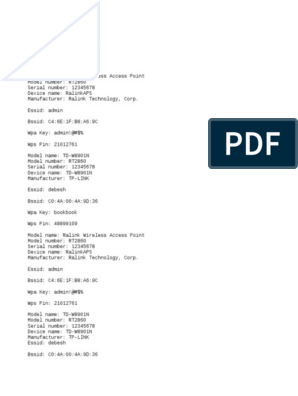NEA Grid Code Performance Standards for Grid
CHAPTER 4
PERFORMANCE STANDARDS FOR GRID
4.1 OBJECTIVE (T-1)
The objective of the Performance Code is to specify:
(a) Minimum technical standards to ensure efficient and reliable operation of Grid;
and
(b) Safety standards to ensure protection for personnel.
4.2 SCOPE OF APPLICATION (T-1)
The provisions of the Performance Code apply to all Parties including the
following:
(a) Grid Owner;
(b) System Operator;
(c) Generators;
(d) Distributors; and
(e) Any other non NEA entity with a User System Connection to the Grid.
4.3 POWER QUALITY (T-1)
4.3.1 Voltage Variations
The System Operator shall ensure that the power supply voltage in the Grid at
major Connection Point during normal operating conditions shall not deviate by
more than +/- 10% of its nominal value.
4.3.2 Frequency Variation
The System Operator shall ensure that the fundamental frequency in the System is
maintained between 48.75 Hz and 51.25 i.e. +/- 2.5% of 50 Hz, which is the
nominal value of fundamental frequency.
August 2004 39
�Performance Standards for Grid NEA Grid Code
4.4 RELIABILITY STANDARDS (T-1)
4.4.1Transmission Availability
The Grid Owner shall ensure that Transmission Availability shall not be less than
95%. The Transmission Availability shall be calculated in the following manner:
Availability = (1- Outage Factor) x 100
Where:
OSi = Outage factor for ith substation.
OFj = Outage factors for jth Feeder of ith substation = Total Outage hours of
jth feeder of ith substation/number of hours in evaluation period.
n = Number of substations
m = Number of feeders in ith substation.
4.4.2 Transmission Reliability
4.4.2.1 The Grid Owner shall ensure that the Transmission Reliability shall not be
less than 93.5%. The Transmission Reliability shall be calculated in the
following manner:
Reliability (%) = (1-SBF) * 100
Where:
SBF = System Blackout Factor = (TC + 0.5 * PCF)/d
TC = Total number of occurrence of Total System Collapse in the
evaluation period
PCF = Total number of occurrence of Partial System Collapse in the
evaluation period
d = Number of days in evaluation period.
40 August 2004
�NEA Grid Code Performance Standards for Grid
4.4.2.2 Partial System Collapse shall be defined as an outage other than a Total
System Collapse, caused by the tripping of one or more feeders resulting in
the total outage of at least one substation connected to power station of 10
MVA or higher capacity.
4.4.2.3 Total System Collapse shall be defined as the total outages of all the
substations caused by a tripping of one or more feeders not attributed to
Generating Stations.
4.4.2.4 The following events shall be excluded in the above calculation:
(a) Outages occurring outside the Grid;
(b) Outages due to generation deficit;
(c) Planned Outages;
(d) Outages initiated by the System Operator; and/or
(e) Outages due to other unforeseen events that the Grid Code Management
Committee shall approve after review of events.
4.5 TRANSMISSION LOSS (T-1)
4.5.1 Classification of Loss
4.5.1.1 Transmission Loss shall include Technical Loss, Non-Technical
Loss and Station Loss.
4.5.1.2 Technical Loss shall be the aggregate of conductor loss,
transformer loss and loss due to metering accuracy.
4.5.1.3 Non-Technical Loss shall be the aggregate of energy loss due to
meter-reading errors and tampering of energy meters and other measurement
equipment.
4.5.1.4 Station Loss is the aggregate of auxiliary consumption required
for proper operation of the Grid substation.
4.5.1.5 Transmission Loss shall be derived from the following formulae:
Transmission Loss in percent = (Total Received Energy – Total Transmitted
Energy – Total Station Loss) / Total Received Energy x 100.
Where:
Total Received Energy is defined as the sum of active energy received by the
Grid Owner from Generators, Distributors, other Users and import at each
Metering Point with adjustments, if any.
August 2004 41
�Performance Standards for Grid NEA Grid Code
Total Transmitted Energy is defined as the sum of active energy supplied by
the Grid Owner to Generators, Distributors, other Users and export at each
Metering Point with adjustments, if necessary.
4.5.2 Maximum Transmission Loss
4.5.2.1 The Grid Owner shall ensure that the Transmission Loss does not exceed 4.5%
of the Received Energy.
4.5.2.2 By the end of the current fiscal year and annually thereafter, the Grid
Owner shall submit to the Grid Code Management Committee the station loss
(auxiliary consumption) at each Grid substation. This shall be accompanied by
full details of operating equipment, their estimated load and monthly energy
consumption.
4.6 SAFETY STANDARDS (T-1)
4.6.1 General
The Grid Owner shall operate and maintain the Grid in a safe manner in
accordance with the provisions in the Electricity Regulation 2050 (1993) and any
amendments thereof. Other provisions not covered by this regulation shall be in
accordance with the Best Industry Practice.
4.6.2 Measurement of Safety
The Grid Owner shall operate and maintain the Grid to ensure the personnel and
equipment safety measurements do not exceed ……… (Refer to Chapter 10:
Exemption & Transitory Provisions for the value).
42 August 2004
�NEA Grid Code Performance Standards for Grid
Date of
S. No. Section Amendments to Grid Code
Amendment
This page is left intentionally blank to record future amendments to the Grid Code.
August 2004 43
�Performance Standards for Grid NEA Grid Code
44 August 2004

















































































